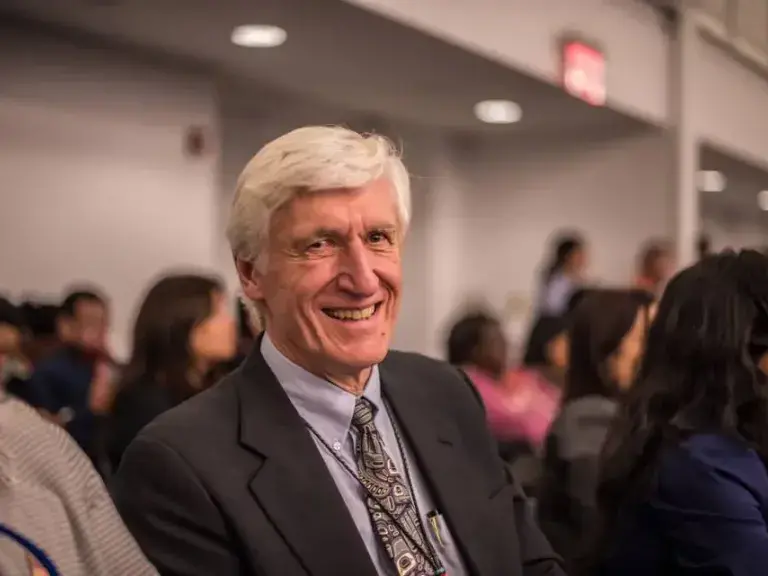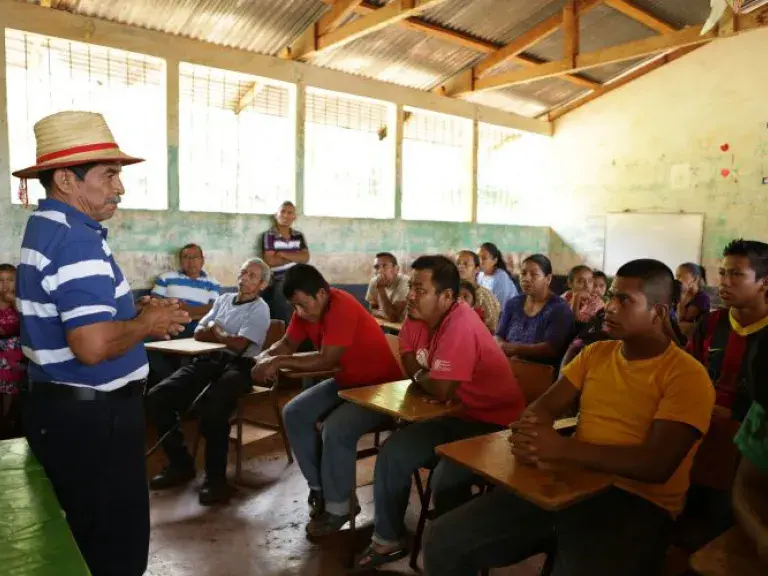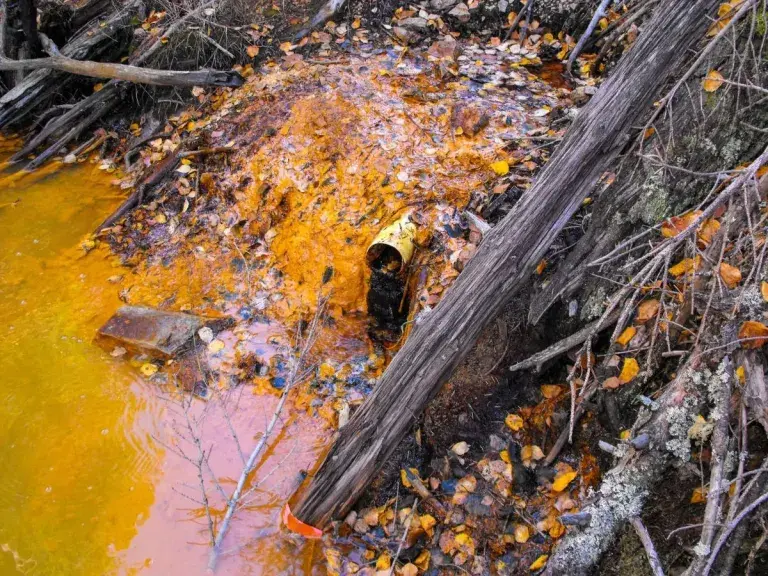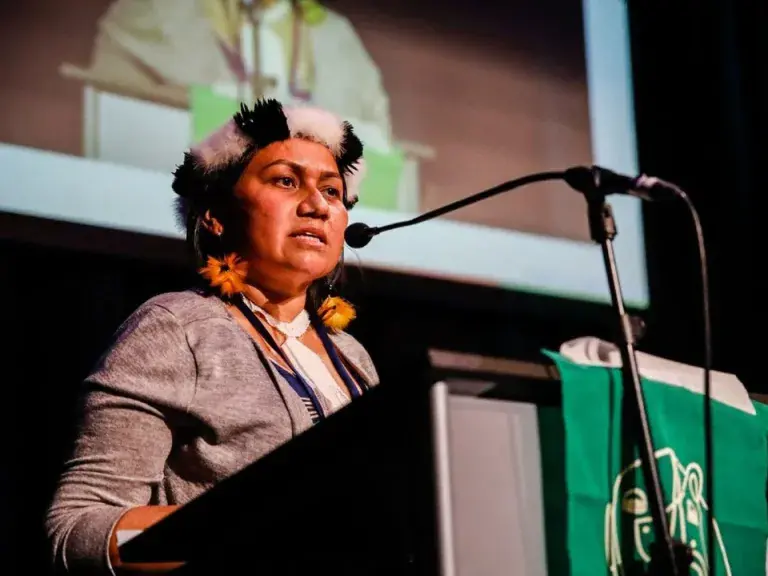For over 40 years, the Indian Law Resource Center has helped American Indian and indigenous peoples across the Americas to demand justice and equality and respect for indigenous peoples human rights. With Indian and Alaska Native nations, we have defined, championed, and advanced new human rights at the international level. We have mounted legal challenges against forces that threatened to bury Indian sovereignty and won justice in national and international legal and policy arenas. We have raised awareness of the systemic inequities and, along the way, changed attitudes that were predicated on ignorance and racism. Certainly a great deal remains to be done, but the opportunities that are before us today are absolutely immense. Thank you for your support in 2021 and helping to position us before some major opportunities in the year ahead. Together we are stronger.
Message from the Founder

Racial Equity 2030 Challenge…Accepted!
In September, the Indian Law Resource Center was named one of ten finalists in a global competition of ideas for how to change systems and institutions to create a more equitable future for families and communities. Our Indigenous Lands Initiative – our idea for helping indigenous communities gain formal, legal recognition of their lands and resources – rose above more than 1,300 others and landed us a thrilling opportunity: a chance at winning a $10-$20 million grant from the Kellogg Foundation. (A link to the announcement of finalists.)
We’re working intensely with two key indigenous partner organizations – long-time collaborators that work in the Brazilian Amazon and the Peruvian Amazon – to turn our idea into an actionable eight-year plan and make a compelling case for a multimillion-dollar investment. The funding would lead to the creation of an independent, indigenous-led agency that would work across Mexico and Central and South America to provide many more communities with free technical and legal assistance to help them overcome the pervasive barriers they face in legalizing their rights to their lands and territories. Our agency/organization would assemble and deploy a network of experts who can assist communities free of charge and, through information and idea sharing, test new strategies for strengthening, scaling and accelerating indigenous land ownership rights. ( A link to a summary of our initial proposal.)
Court Date Set! Maya Q’eqchi’ Agua Caliente Community v. Guatemala
Throughout the year we continued to argue an indigenous land rights case against the government of Guatemala before the Inter-American Court of Human Rights and set the stage for securing another important advance in the law concerning indigenous peoples’ land and natural resource rights. The Court has finally set a hearing date for oral arguments and a schedule for receiving final arguments. This may very well be the penultimate milestone in what has become a 12+ year legal strategy to force Guatemala to create a legal-political framework that recognizes the collective rights of the country’s indigenous majority.
Unfortunately, threats, intimidation, and violence in El Estor really intensified this past fall. The government declared a state of siege to quash indigenous protests over the mine and the mining company’s violation of a Court order to suspend operations. The police evicted nearly 100 Maya Q’eqchi’ families, bulldozed homes, and set fire to their belongings. The hardline stance of the Guatemalan government has drawn condemnation from a group of U.S. congressmembers and a call for the State Department to take action. (A link to their letter/statement.) We’re working to keep these congressional offices apprised of our case. Ongoing diplomatic scrutiny and pressure from the U.S. and other governments is critical to addressing the human rights violations against indigenous communities in Guatemala.
We’re certain we can win a ruling in favor of our Maya Q’eqchi’ clients along with Court decisions forcing national law and policy reforms to prevent the theft of indigenous lands and help remedy land-related conflicts across Guatemala. Our legal team is also pressing for something more. Our case is the first time the Court is being asked to apply the international legal principle of permanent sovereignty over natural resources to indigenous peoples. If we successfully argue the point, it could set a hugely important precedent concerning indigenous peoples’ natural resource rights, including subsurface resources. This could be pivotal in future legal action to fight deforestation, mining, and other unsustainable resource extraction throughout Mexico and Central and South America.

The Agua Caliente community will finally have their day in Court on Feb 9th. The case is the Center’s second time before the Inter-American Court of Human Rights; our first, Awas Tingni v. Nicaragua, resulted in a landmark judgement. In finding Nicaragua in violation of the collective land rights of an Indigenous people, the Court established the right of indigenous communities to their collective land as a basic human right.
Making Safety in Native Communities a National Priority
Through our Safe Women, Strong Nations project we continued to bring attention to and educate local, national, and international audiences about how essential it is for tribes to have the resources and authority to police their lands and protect Native women and other vulnerable community members from violence. While politics continued to thwart the passage of important national legislation, namely the reauthorization of Violence Against Women Act (VAWA), we believe that our ongoing and consistent work to educate decisionmakers and decision influencers and amplify the experiences of Native women may be one of the best ways to start to bridge the political divide.
Despite the political stalemate on VAWA, there were developments to celebrate. This year, U.S. Supreme Court reached a unanimous decision in United States v. Cooley affirming the authority of tribal police officers to temporarily detain and search non-Natives on tribal land if suspected of violating state or federal law. Due to the case’s potential impact on tribes’ authority in policing violence against Native women, the Center had joined an amicus to the Court for the case. (An article about the ruling in Time magazine cited/linked to the Center’s website). In addition, President Biden’s recent Executive Order on Improving Public Safety and Criminal Justice for Native Americans and Addressing the Crisis of Missing or Murdered Indigenous People, which explicitly makes the safety and well-being of Native Americans a top priority for the Administration, makes us hopeful that further progress is within reach in the year ahead.
We also worked to influence and urge the United States to address the rise in domestic violence as a consequence of the pandemic and make specific accommodations for Native populations in national Covid-19 response plans. The Indian Law Resource Center addressed the UN Human Rights Council in September to urge their action in examining issues of violence against Native women in the U.S., including in the context of the pandemic.
Holding the Line on New Gold Mining in Montana
In 2021 we revived our work providing legal counsel to the Assiniboine and Gros Ventre Tribes of the Fort Belknap Indian Community. We had worked with the tribes for decades to successfully shut down and demand the clean-up of open-pit, cyanide-heap-leach gold mines next to the reservation. We are now back to court to try to stop mineral exploration that could open the door for new gold mining on the site of the former Zortman-Landusky mine-complex, undo decades of reclamation work, and put the ongoing clean-up efforts in jeopardy. The pollution from former mining continues to creep deeper into the reservation and closer to powwow grounds and cultural sites even though Montana still spends millions each year on water treatment – which experts believe will be needed in perpetuity.

Untreated waste from the former Zortman-Landusky mine complex is flowing into the reservation in Montana
This fall our group filed another complaint (link to an October 2021 news article) asking the Department of Interior to investigate the Bureau of Land Management’s failure to timely renew a mineral withdrawal — a regulatory tool that blocks federal agencies from approving new mining claims — for the nearly 2,700 acres of public lands in the Zortman Landusky Reclamation Area. A 48-hour delay in officially putting those protections in place led to 10 mining claims being filed. Staking and filing mining claims is a detailed process that involves considerable research and preparation. Our complaint seeks an explanation for this lapse by the BLM — whether a careless mistake or intentional misconduct — and accountability.
Supporting the Survival of Western Shoshone Language and Identity
After about a 15-year hiatus, we’re also starting to work with the Western Shoshone again — not in another legal battle but on a matter of cultural preservation. For indigenous communities everywhere, the pandemic intensified a painful reality: the passing of an elder is much more than a personal loss for family and friends, the entire tribe grieves the cultural loss. We’re helping the Te-Moak Tribe of Western Shoshone launch a project to get the words, stories, and teachings of Western Shoshone elders digitized and archived so future generations can hear, learn, and keep Western Shoshone language, beliefs, ceremonies, and customs alive.
There are reels of film captured over nearly a half century for a series of documentaries about the Western Shoshone’s struggle with the U.S. government to retain control of their ancestral lands. The Center has long supported the filmmaker and the production of the films (the third film in the trilogy is currently in final production; a link to the trailer is here: https://indianlaw.org/land-of-the-brave) because they are excellent educational and inspirational tools. But we are especially thrilled that what would have been left on the cutting room floor can be revived and used by the Tribe in a vital and unexpected way. Putting reels of film into digital format to make them accessible to the tribal youth will be a strong start to preserving and passing on the teachings of Shoshone elders.
Support, Training, and Counsel to Indigenous Leaders and Communities in the Brazilian Amazon
Our work to help Brazil’s indigenous leaders and advocates bring international attention and condemnation to the actions of the Bolsonaro government continued to be some of our most urgent work. The direct threats against indigenous leaders who criticize the government, the escalation of invasions, and violence in indigenous territories continue to increase in severity, all aggravated by the additional dangers and vulnerabilities of indigenous peoples during a global pandemic.

We engaged the UN Expert Mechanism on the Rights of Indigenous Peoples, which investigated indigenous leaders’ complaints and issued a strong report and extensive set of recommendations for action by Brazil to protect indigenous rights. We worked with and helped a team of indigenous lawyers in Brazil gain experience in international legal processes, which resulted in the Inter-American Commission on Human Rights recommending that Brazil put “precautionary measures” in place to protect specific communities that are under immediate physical danger due to illegal invaders. We followed up on these recommendations by organizing meetings and public hearings so that Brazil would be questioned and forced to answer to these human rights official and bodies about the implementation of their recommendations.
Another highlight in our work with indigenous leaders and advocates in Brazil was supporting and helping them prepare for their participation in the Conference of Parties (COP) – the UN Climate Change meetings that were held in Glasgow, Scotland, in November. Two of the Center’s staff attended the COP meetings alongside a delegation of 21 of our Brazilian partners. Prior to COP, we facilitated a three-day planning meeting to help them develop strategies for increasing the impact of their advocacy and positioning the Amazonian indigenous movement centrally in addressing the climate crisis. The "Tarumã Charter" is one of the pieces to come out of the energetic and intense discussions during the workshop; it was circulated widely in Glasgow.
More Land in Seminole Hands
Lastly, this past summer we wrote the closing chapter in our work with a band of traditional Seminole Indians in Oklahoma. The story first began in the late 1990s when we started a search for and eventually purchased two secluded, environmentally intact tracts of land for traditional Seminoles in Florida and Oklahoma to hold their Green Corn Dance ceremonies and other rituals. We put 2,500 acres of wild, undeveloped land into the care of the Independent Traditional Seminole Nation in Florida back in 2003. We at last transferred the tract in Oklahoma to the Gar Creek Seminole Indian Community, which now holds nearly 600 acres and a permanent place to carry out their ceremonies and cultural education projects.